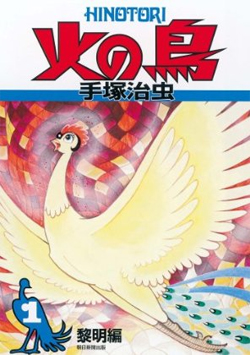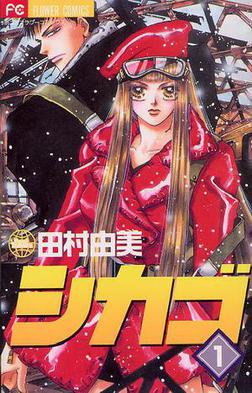
Astro Boy, known in Japan by its original name Mighty Atom, is a Japanese manga series written and illustrated by Osamu Tezuka. It was serialized in Kobunsha's Shōnen from 1952 to 1968. The 112 chapters were collected into 23 tankōbon volumes by Akita Shoten. Dark Horse Comics published an English translation in 2002. The story follows Astro Boy, an android young boy with human emotions who is created by Umataro Tenma after the recent death of his son Tobio. Eventually, Astro is sold to a robot circus run by Hamegg, but is saved from his servitude by Professor Ochanomizu. Astro becomes a surrogate son to Ochanomizu who creates a robotic family for Astro and helps him to live a normal life like an average human boy, while accompanying him on adventures.

Osamu Tezuka was a Japanese manga artist, cartoonist and animator. Born in Osaka Prefecture, his prolific output, pioneering techniques and innovative redefinitions of genres earned him such titles as "the Father of Manga", "the Godfather of Manga" and "the God of Manga". Additionally, he is often considered the Japanese equivalent to Walt Disney, who served as a major inspiration during Tezuka's formative years. Though this phrase praises the quality of his early manga works for children and animations, it also blurs the significant influence of his later, more literary, gekiga works.

Weekly Shōnen Jump is a weekly shōnen manga anthology published in Japan by Shueisha under the Jump line of magazines. The manga series within the magazine consist of many action scenes and a fair amount of comedy. Chapters of the series that run in Weekly Shōnen Jump are collected and published in tankōbon volumes under the Jump Comics imprint every two to three months. It is one of the longest-running manga magazines, with the first issue being released with a cover date of August 1, 1968.

Animerica Extra was a monthly manga magazine published in by Viz Media. Established as a companion to the anime news and review magazine Animerica, Animerica Extra primarily published English-language translations of Japanese manga. The magazine shifted towards publishing shōjo manga in 2003, before ceasing publication in 2004.

Phoenix is an unfinished manga series written and illustrated by Osamu Tezuka. Tezuka considered Phoenix his "life's work"; it consists of 12 parts, each of which tells a separate, self-contained story and takes place in a different era. The plots go back and forth from the remote future to prehistoric times. The story was never completed, having been cut short by Tezuka's death in 1989.

Princess Knight, also known as Ribon no Kishi is a Japanese manga series written and illustrated by Osamu Tezuka. This manga follows the adventures of Sapphire, a girl who was born accidentally with a blue heart of a boy and a pink heart of a girl. She pretends to be a male prince to prevent the evil Duke Duralumin from inheriting the throne of Silverland. The gender-bending main character was inspired by the all-female musical theater group Takarazuka Revue in which women performed both female and male roles.
Daisuke Igarashi is a Japanese manga artist. Active since the 1990s, he is known for his detailed depictions of nature in combination with spiritual or surreal themes. Manga series like Witches and Children of the Sea have been critically acclaimed and translated into several languages.

Monthly Ikki was a monthly seinen manga magazine published by Shogakukan. It tended to specialize in underground or alternative manga, but it had its share of major hits as well. The magazine started in 2000 as a spin-off to Shogakukan's Weekly Big Comic Spirits, titled Spirits Zōkan Ikki, published on a bimonthly basis, and became a standalone monthly magazine in 2003. In 2009, Viz Media launched an online English version of Monthly Ikki, named SigIkki, which serialized selected titles from the magazine. Ikki ceased publication after an almost 14-year-run in 2014, and was replaced by Hibana, which ran from 2015 to 2017, before ceasing its publication as well.

No. 5 is a Japanese manga series written and illustrated by Taiyō Matsumoto. It was serialized in Shogakukan's seinen manga magazine Monthly Ikki from November 2000 to January 2005. Shogakukan compiled its chapters into eight wideban volumes.

Chicago is a Japanese near-future action manga series written and illustrated by Yumi Tamura. It was serialized in Shogakukan's Bessatsu Shōjo Comic magazine from the November 2000 issue to the May 2001 issue. Shogakukan collected the individual chapters into two bound volumes published under the Flower Comics imprint. Viz Media licensed the manga for an English-language release in North America, first serialized in Animerica Extra magazine and later published in graphic novel format.

Even a Monkey Can Draw Manga, also abbreviated as Saruman (サルまん), is a Japanese parody instructional manga by Koji Aihara and Kentaro Takekuma. It was serialized in Shogakukan's seinen manga magazine Big Comic Spirits from 1989 to 1991, with its chapters collected in three tankōbon volumes. The manga was licensed in North America by Viz Media, being serialized in its Pulp magazine from 2001 to 2002; they also released a single volume. A second series, titled Saruman 2.0, was serialized in Shogakukan's Monthly Ikki from 2007 to 2008; its chapters were collected in a single volume, released in 2017.

Hideo Azuma was a Japanese manga artist. Azuma made his professional debut in 1969 in the Akita Shoten manga magazine Manga Ō. He was most well known for his science fiction lolicon-themed works appearing in magazines such as Weekly Shōnen Champion, as well as children's comedy series such as Nanako SOS and Little Pollon. He has been called the "father of lolicon".

Children of the Sea is a Japanese manga series written and illustrated by Daisuke Igarashi. It was serialized in Shōgakukan's seinen manga magazine Monthly Ikki from December 2005 to September 2011. Shōgakukan has collected the series into five tankōbon volumes published between July 2007 and July 2012. The manga is licensed in North America by Viz Media, who serialized it online at SigIkki.com and released the five tankōbon volumes from July 2009 to June 2013.
Natsume Ono is a Japanese manga artist. In addition to her mainstream manga work, Ono publishes boys' love comics under the pen name basso.

Takemitsuzamurai or Takemitsu Zamurai is a Japanese historical samurai manga series written by Issei Eifuku and illustrated by Taiyō Matsumoto. It was published in Shogakukan's Big Comic Spiritsseinen manga magazine, with its chapters collected in eight wideban volumes.

Sunny is a Japanese slice of life manga series written and illustrated by Taiyō Matsumoto. It was serialized in Shogakukan's seinen manga magazine Monthly Ikki from December 2010 to September 2014, when the magazine ceased publication. It was later transferred to Monthly Big Comic Spirits, being serialized from January to July 2015. Its chapters were collected in six wide-ban volumes. The manga was licensed for English release in North America by Viz Media.

Voyeur, also known as Nozokiya, is a Japanese manga series written and illustrated by Hideo Yamamoto. The series and its sequel Voyeurs, Inc. were serialized in the manga magazine Weekly Young Sunday from 1992 to 1997. The series broadly focuses on individuals who engage in voyeurism for both sexual gratification and investigative purposes. Voyeurs, Inc. has been adapted twice: as a live-action film produced by Toei in 1995, and as a live-action television drama produced by TV Tokyo in 2007. In North America, an English-language translation of Voyeur and the first three volumes of Voyeurs, Inc. were published by Viz Media, which also serialized the series in its manga magazine Pulp.

Heartbroken Angels is a Japanese manga series written and illustrated by Masahiko Kikuni. It is a yonkoma series originally published in the manga magazine Weekly Young Sunday. An English-language translation of the first two volumes of Heartbroken Angels was published by Viz Media, which also serialized the series in its manga magazine Pulp.

Tokyo These Days is a Japanese manga series written and illustrated by Taiyō Matsumoto. It was serialized in Shogakukan's seinen manga magazine Big Comic Original Zōkan from June 2019 to June 2023, with its chapters collected in three wideban volumes.

















